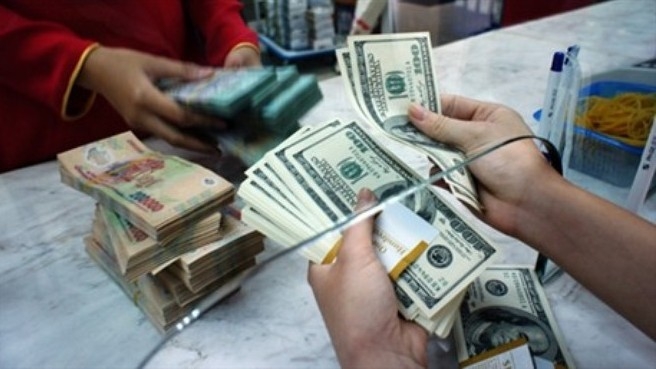Trade deficit places pressure on exchange rates
The National Financial Supervisory Commission (NFSC) predicted that exchange rates will be under the greatest pressure from the demand of foreign currencies, due to the rising trade deficit which is forecast at 3.5% of the total import and export revenue.
However, the supply of foreign currencies and international market factors will continue to help reduce the pressure on exchange rates.
The abundant foreign currency supply from indirect foreign investment (mergers and acquisitions) and direct foreign investment, in addition to the downward trend of the Bloomberg Dollar Index, helped ease the pressure on the exchange rate between the Vietnamese dong and the US dollar.
The rise of the US Federal Reserve (Fed) interest rate in the short term will also not exert any pressure on the exchange rates, as the interest rate in Vietnamese dong deposits is more attractive than in the US dollar deposits.
 |
In the long term, the Fed's projected interest rate hike to 3% by the end of 2019 may create pressure on exchange rates. Particularly, the devaluation trend of the Chinese Yuan will create considerable impacts on Vietnam's economy as Vietnam tends to suffer higher trade deficit with China from US$23.7 billion in 2013 compared to US$28 billion in 2016.
Compared with GDP, Vietnam's trade deficit with China is 14%, much higher than the US's trade deficit with China at 2%.
Dr Nguyen Duc Do, deputy head of the Institute of Economics and Finance said that trade deficit has put pressure on exchange rates but insists it is not worrying as the trade deficit is only about US$3 billion while foreign currency reserve is over US$40 billion, adding that the State Bank of Vietnam can keep the exchange rate stable in the near future.
Do also noted that the price of the US dollar is declining in the world market, creating benefits for Vietnamese exporters. If price of the US dollar does not rise sharply until the end of the year, the SBV will likely be able to stabilise the exchange rate between the Vietnamese dong and the US dollar at their current levels.
The financial expert predicted that the exchange rate from now until the end of the year will be stable. Even if the price of the US dollar rises again in the international market, the State Bank will not allow the exchange rate to increase sharply in order to achieve the target of stabilising interest rates as requested by the Government.

